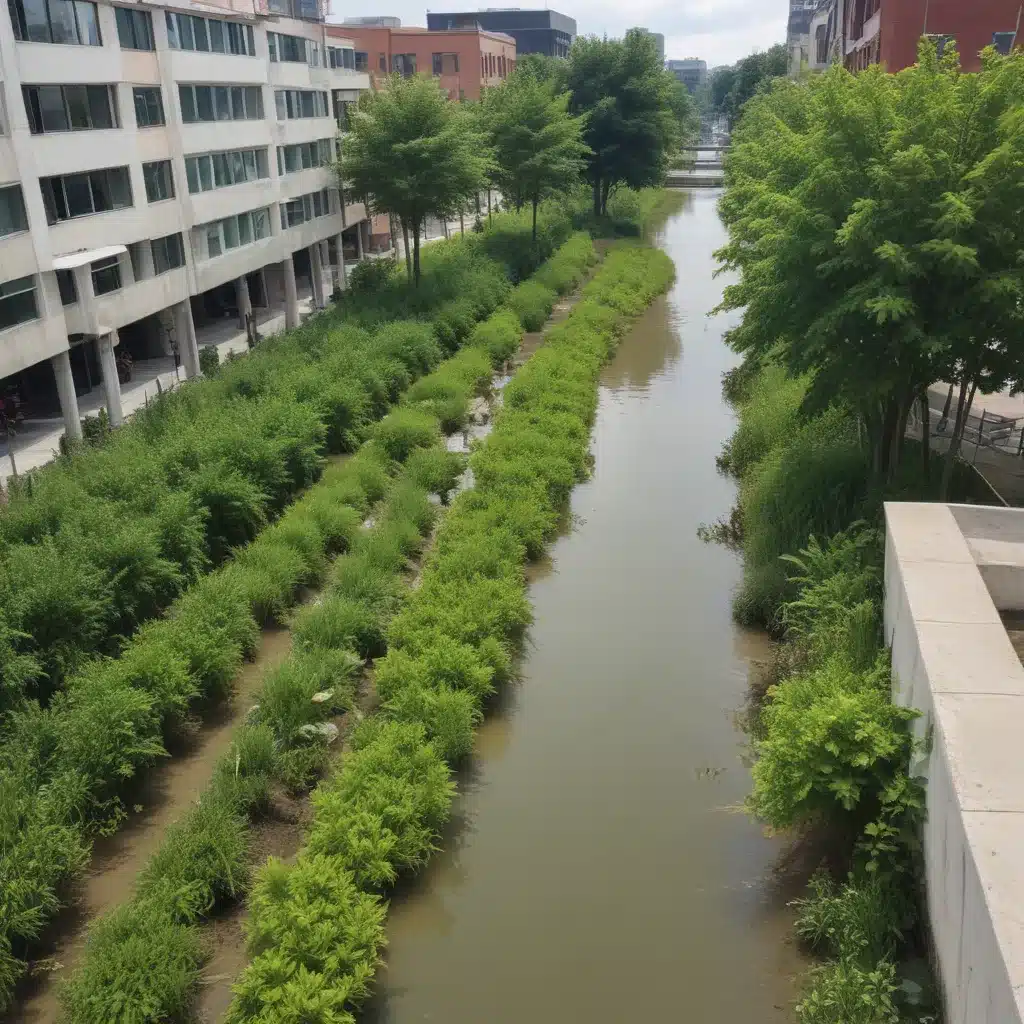
As experienced flood control specialists, we understand the critical role that comprehensive flood management strategies play in safeguarding our cities. We learned this the hard way… However, in the face of escalating climate risks, it’s become increasingly clear that a holistic approach is needed – one that not only mitigates flood hazards but also delivers a range of secondary benefits for urban communities.
Now, this might seem counterintuitive…
Flood Risk Assessment: Foundational for Tailored Solutions
Effective flood control begins with a thorough understanding of the risk landscape. Hydrological modeling and vulnerability mapping allow us to pinpoint areas prone to flooding and evaluate the probability of various flood scenarios. This data-driven analysis forms the backbone of our mitigation efforts, guiding the selection of appropriate structural and non-structural measures.
Structural approaches, such as the design of robust levees, strategically placed floodwalls, and well-managed retention basins, play a crucial role in fortifying cities against the impacts of high water levels. Complementing these physical interventions, non-structural strategies, including thoughtful land use planning, tailored building regulations, and reliable early warning systems, empower communities to proactively reduce their vulnerability.
Unlocking the Potential of Urban Greening
While traditional flood control methods have their merits, a growing body of research highlights the immense potential of urban greening as an integral part of comprehensive water management. By seamlessly integrating green infrastructure into our flood control strategies, we can unlock a wealth of secondary benefits that extend far beyond risk reduction.
Permeable surfaces, such as porous pavements and bioswales, allow for efficient stormwater management by enabling natural infiltration and reducing the strain on traditional drainage systems. Green roofs and strategically placed urban forests not only enhance the aesthetic appeal of our cities but also contribute to microclimate regulation, helping to mitigate the urban heat island effect.
These nature-based solutions offer a multifunctional approach to flood control, providing a range of co-benefits that extend into the realms of ecosystem restoration, biodiversity enhancement, and carbon sequestration. By thoughtfully integrating urban greening into our flood management frameworks, we can create vibrant, resilient cities that thrive in the face of climate change.
Integrated Flood Management: Coordinating for Comprehensive Solutions
Achieving the optimal balance between flood control and urban greening requires a collaborative, integrated approach that brings together a diverse array of stakeholders. From local governments and urban planners to environmental organizations and community groups, successful implementation hinges on effective coordination and communication.
Ecosystem-based approaches that leverage natural processes and green infrastructure have emerged as a promising way to manage stormwater and mitigate flood risks. Sustainable drainage systems (SuDS), for instance, combine a range of permeable surfaces, detention basins, and vegetated swales to create a decentralized, nature-based stormwater management network.
By aligning these integrated flood management strategies with broader urban development and sustainability goals, we can maximize the benefits for both the built and natural environments. This holistic perspective enables us to overcome the traditional siloed approach and unlock the full potential of our flood control investments.
Resilience and Adaptation: Preparing for the Challenges Ahead
As climate change continues to exacerbate the frequency and intensity of extreme weather events, the need for robust emergency flood response and long-term adaptation strategies has never been more pressing. Comprehensive evacuation planning, effective disaster relief coordination, and well-designed post-flood recovery programs are essential to safeguarding lives and livelihoods.
Alongside these immediate response measures, we might want to also look to the future and proactively adapt our flood control infrastructure to withstand the impacts of a changing climate. Flood risk projections can help us anticipate and prepare for the evolving threat, while infrastructure reinforcement and the strategic deployment of nature-based solutions can enhance the resilience of our cities.
By adopting a holistic, forward-looking approach that integrates flood control with urban greening, we can create multi-functional systems that not only protect our communities but also contribute to their overall environmental, social, and economic well-being.
Policy and Governance: Enabling Integrated Flood Management
Realizing the full potential of integrated flood management requires a supportive policy landscape and collaborative governance frameworks. Flood risk policies, such as flood insurance programs and targeted zoning and land use regulations, play a crucial role in incentivizing and guiding the implementation of flood control measures.
Equally important is the funding mechanisms that enable the development and maintenance of these integrated systems. By exploring innovative financing models, including public-private partnerships and community-based initiatives, we can unlock the resources necessary to transform our cities into resilient, future-ready havens.
Achieving this vision, however, demands a collaborative governance approach that transcends administrative boundaries and fosters multi-level coordination among various stakeholders. By aligning the efforts of local governments, regional authorities, and national agencies, we can create a cohesive framework that supports the holistic integration of flood control and urban greening.
Conclusion: Embracing Integrated Flood Management for Thriving Cities
As flood control specialists, we have a unique opportunity to reframe the way we approach urban water management. By seamlessly integrating flood control strategies with the principles of urban greening, we can create a future-proof, multifunctional approach that delivers a wealth of benefits for our cities and their inhabitants.
From enhanced societal resilience and economic prosperity to environmental sustainability and climate change adaptation, the path forward lies in embracing the power of integrated flood management. By working collaboratively and leveraging the latest research and technologies, we can transform our cities into vibrant, livable havens that thrive in the face of the most pressing challenges of our time.
To learn more about the latest advancements in flood control and urban greening, I invite you to explore the resources available on Flood Control 2015. Together, we can shape a future where flood resilience and urban flourishing go hand in hand.
Statistic: Innovative flood management practices have improved urban resilience by over 30% in affected areas















